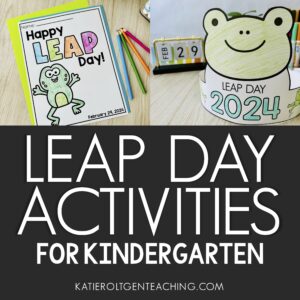Today, I’m sharing some of my thoughts and ideas about fine motor experiences in kindergarten. Over the last several years, one of the hot topics in early childhood education has been the increasing number of children entering school without age-appropriate fine motor skills. Studies such as this one have linked fine motor skills with academic achievement and have found that students with better fine motor skills in kindergarten had higher rates of academic growth through middle school.
Although I’m not an occupational therapist or fine motor expert, I began my teaching career as a special education teacher and several of my students had motor delays. Additionally, my younger daughter was diagnosed with mild dystonia that impacts her motor skills and speech. She’s doing very well and is currently back on-level with her peers, but her teachers, her neurologist, and my husband and I are continually monitoring her. Having a child with a motor delay – even a mild one – is really eye-opening and it’s strengthened my passion for ensuring that all children have opportunities for fun and engaging fine motor experiences!
While we hope that our students are having adequate fine motor experiences at home through play and daily tasks, many of them will still enter kindergarten with a fine motor delay. A great deal of fine motor strength comes from normal and routine daily tasks, such as buttoning, coloring, and playing with toys. It also might be necessary for you to add some activities with the explicit purpose of fine motor work. Fortunately, I have lots of ideas for integrating fine motor work into your daily classroom routine and I’m sharing them with you today!
When to Integrate Fine Motor Work
Integrating more fine motor work depends heavily on your school day length and schedule, so what works for you might not work for another teacher. If you have time for morning tubs or fine motor centers or stations, great! If not, you can find ways to add fine motor tools to existing centers or activities.
Some examples of times to provide fine motor work:
*Morning tub/task time
*Learning centers
*Fine motor stations or centers, such as “Fine Motor Friday” rotation stations
*Take-home bags
*Fast-finisher tasks (although this may not provide all students with equal fine motor time)
Morning Tubs
If you are already using morning tubs, you most likely already have some fine motor activities! The greatest thing about morning tubs is that they’re hands-on instead of worksheets. Morning tubs can be academic activities, non-academic/just-for-fun activities, or a combination. Here are some tools and activities that are great starters for fine motor integration:
*Playdoh and tools
*Stickers
*Pom-pom balls, tweezers, and cups
*Shoelaces or pipe cleaners and beads
*Scissors and paper scraps
*Hole punchers and paper strips
*Mini erasers and containers such as muffin tins or bowls
*Plastic links
*Clothespins and paint samples
Additionally, you can purchase packs of morning tub activities to print and prep. I created packs of activities and many of them are specifically geared at fine motor strengthening, while others are more academic in nature. You can use all 20 activities in the packs or use some in combination with your own activities or materials. Here’s a look at some of the activities in my
Back-to-School morning tubs pack that are great for integrating fine motor practice:
Learning Centers
Adding fine motor experiences to your learning centers can be fun, easy, and effective. Sometimes all it takes is changing up an activity to incorporate a fine motor tool or task. Here are a few ideas:
Fine Motor Stations or Centers:
If you are looking for a more established way to increase fine motor work, you might try fine motor stations or centers. For example, devote 30-60 minutes on Friday afternoons to “Fine Motor Friday” and have students rotate around fine motor stations. This can take some prep work and planning but it is also rewarding and fun. Consider doing thematic and seasonal activities. Here are some examples of activities from my
fine motor packs.
Take-Home Bags:
If you’re short on time and/or space, sending home fine motor bags is an idea to explore. You can keep this simple by creating a handful (possibly 4-6) fine motor bags and rotating them around your students. Ask families to complete the activity and return by a certain date or the next school day. Simply keep a checklist of who has had each bag.
You could also do a monthly thematic fine motor bag consisting of a few fine motor activities. Consider putting together two bags to ensure each student has a chance to bring the bag home every month.
Early-Finisher Tasks:
Another idea is to have fine motor tubs or bags and allow students to work on the activities when they’re finished with their work. One downside to this is that it doesn’t give all students an equal opportunity to work on them. If your students are working on fine motor activities at other points in the day, then using them as early-finisher activities in addition to that could work well!
Labels:
Click here to download some free labels for your fine motor tubs, centers, or take-home bags!
Fine Motor Tools:
I’m frequently asked for recommendations on materials for morning tubs and fine motor activities. You can click on the image below to see my top recommendations on Amazon.
Fine Motor Packs:
If you have enough on your plate and are looking for thematic/seasonal packs, I have several! Each pack has approximately 10 fine motor activities that are kid-tested and approved. Here are just a few, or
click here to see my Fine Motor Bundle.
I hope this post has given you some ideas and inspiration about fine motor work in your classroom! If you are able to use any of these ideas or activities, be sure to tag me on Facebook (
Katie Roltgen Teaching) or Instagram (
@kroltgen).
